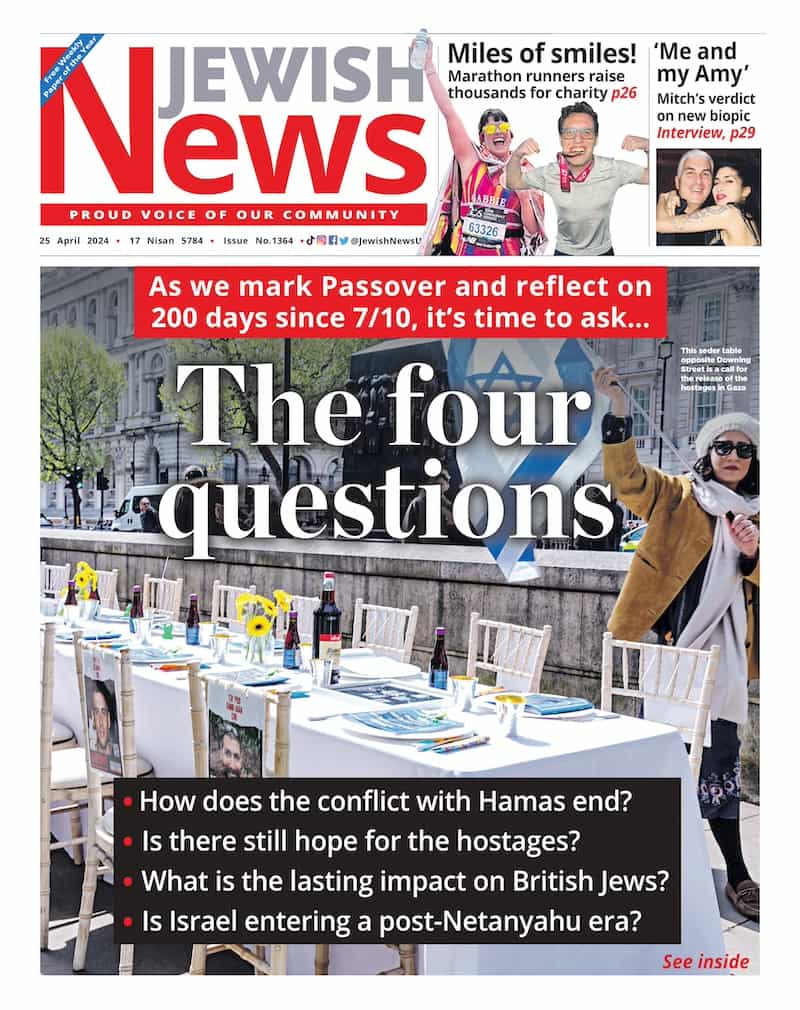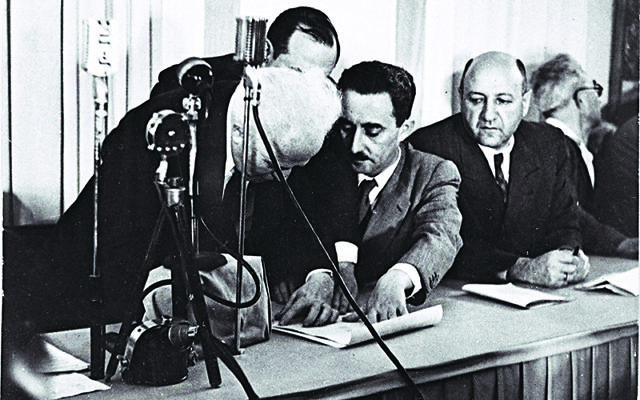10 things you may not know about Balfour
To mark this week’s 99th anniversary of the Balour Declaration, we reveal some fascinating facts about the most famous proclamation since the Ten Commandments
1. The Balfour Declaration is in the form of a letter dated 2 November 2017 from Foreign Secretary Arthur Balfour to Lord Rothschild. It comprises just 67 words.
2. Lord Rothschild was asked to convey the letter’s contents to the Zionist Federation. This was because the letter could not be addressed to Chaim Weizmann, the main driver behind the Declaration, as Weizmann was not the most senior member of the Zionist hierarchy. Therefore, Lord Rothschild, as de facto head of the British Jewish community, was asked to pass the contents of the Declaration to the ZF.
3. The final letter, which was sent on 2 November, was the fifth draft of the historic Declaration. You can see the text of all five drafts at www.balfour100.com
4. A month before issuing the Declaration, the War Cabinet asked for the views of eight Jews, four anti-Zionists and four Zionists. Letters of support were submitted by Chief Rabbi Joseph Hertz, Lord Walter Rothschild and Zionist leaders Nahum Sokolow and Chaim Weizmann.
5. Chaim Weizmann was known to the British Government for his scientific work for the war effort from Manchester University, inventing a method to produce the synthetic acetone used to create cordite, a military propellant.
6. Arthur Balfour and Chaim Weizmann had first met in Manchester in 1906. They reacquainted their friendship in 1914 through Weizmanns work in the war effort.
7. The legendary editor of the Manchester Guardian, CP Scott, after the whom the Scott Trust is named, did more than anybody else to open doors for Zionist leader Chaim Weizmann in his quest for British support for the Zionist enterprise.
8. In May 1918, Chaim Weizmann met the Emir Feisal – the single recognised Arab leader at the time – in Aqaba where they exchanged letters of mutual support. With T.E. Lawrence (Lawrence of Arabia) as a middleman, the two continued with a series of meetings that led to a 3 January 1919 memorandum in which Feisal endorsed the Balfour Declaration. However, he was unable to deliver the memorandum due to Arab hostility. Imagine how the course of history would have changed had he been able to do so.
9. The Balfour Declaration was given legal effect and became part of international law at the 1920 San Remo conference where Britain was given a Mandate to administer Palestine and was required to implement the Balfour Declaration.
10. Winston Churchill (pictured) told the House of Commons in May 1939: “Either there will be a Britain which knows how to keep its word on the Balfour Declaration and is not afraid to do so, or believe me, we shall find ourselves relieved of many overseas responsibilities other than those comprised within the Palestine Mandate.”
11. In honour of the community coming together for this special anniversary, here’s a bonus fact… The Declaration was not published in the press until 9 November – a week after it was issued. The government intended that it should not be made public “until a favourable military situation had been brought about”. This was known by 8 November. However, since this was a Thursday, the news was delayed until the next day, a Friday, when it could be revealed in the Jewish Chronicle (a popular newspaper of the time).

Thank you for helping to make Jewish News the leading source of news and opinion for the UK Jewish community. Today we're asking for your invaluable help to continue putting our community first in everything we do.
For as little as £5 a month you can help sustain the vital work we do in celebrating and standing up for Jewish life in Britain.
Jewish News holds our community together and keeps us connected. Like a synagogue, it’s where people turn to feel part of something bigger. It also proudly shows the rest of Britain the vibrancy and rich culture of modern Jewish life.
You can make a quick and easy one-off or monthly contribution of £5, £10, £20 or any other sum you’re comfortable with.
100% of your donation will help us continue celebrating our community, in all its dynamic diversity...
Engaging
Being a community platform means so much more than producing a newspaper and website. One of our proudest roles is media partnering with our invaluable charities to amplify the outstanding work they do to help us all.
Celebrating
There’s no shortage of oys in the world but Jewish News takes every opportunity to celebrate the joys too, through projects like Night of Heroes, 40 Under 40 and other compelling countdowns that make the community kvell with pride.
Pioneering
In the first collaboration between media outlets from different faiths, Jewish News worked with British Muslim TV and Church Times to produce a list of young activists leading the way on interfaith understanding.
Campaigning
Royal Mail issued a stamp honouring Holocaust hero Sir Nicholas Winton after a Jewish News campaign attracted more than 100,000 backers. Jewish Newsalso produces special editions of the paper highlighting pressing issues including mental health and Holocaust remembrance.
Easy access
In an age when news is readily accessible, Jewish News provides high-quality content free online and offline, removing any financial barriers to connecting people.
Voice of our community to wider society
The Jewish News team regularly appears on TV, radio and on the pages of the national press to comment on stories about the Jewish community. Easy access to the paper on the streets of London also means Jewish News provides an invaluable window into the community for the country at large.
We hope you agree all this is worth preserving.






















